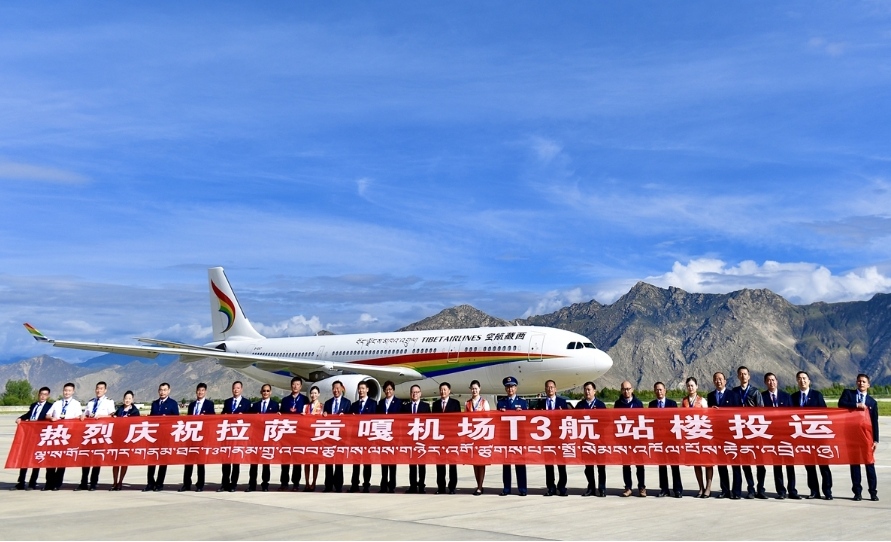Chinese Occupied Tibet Being Turned Into A logistics Hub For South Asia

Lhasa Gonggar Airport in Southwest China’s Tibet Autonomous Region opens its newly constructed Terminal 3, which is the biggest in the region, for operations on Saturday
Lhasa Gonggar Airport in forcibly occupied Tibet was opened with a newly constructed Terminal 3, which is the biggest in the region, for operations on Saturday. This has marked a significant milestone in the region’s rapid infrastructure development that could significantly boost China’s military capability. The cargo transport hub will also help China to become a global logistics hub for South Asia.
With the new terminal, the airport is expected to meet an annual handling capacity of 9 million passengers and 80,000 metric tons of cargo, handling more than 75 percent of the passenger flow of all airports in Occupied Tibet, according to the airport.
The expansion project, which started over three years ago, included the 88,000-square-meter terminal, which is over three times the size of the original terminal and has 21-stand parking apron, a supporting air traffic control facility and new communication and airfreight facilities. The expansion project of Lhasa Gonggar Airport started in December 2017 with an investment of 3.9 billion yuan ($603 million).
In recent years, infrastructure construction in occupied Tibet has accelerated with many civil aviation, railways and highway projects, said Liu Zongyi, the secretary-general of the Research Center for China-South Asia Cooperation at the Shanghai Institutes for International Studies.
“This is expected to help build the region into an international logistics hub for South Asia,” Liu told the Global Times on Sunday.
Since late 2012, China has been stepping up its infrastructure investment in the autonomous region, which has launched 130 air routes, with 61 cities connected by flights, according to the Xinhua News Agency. In 2020, the number of passenger trips made through these airports totaled 5.18 million. And in April, officials announced that Tibet will build three new airports, including a second runway at the Lhasa Gonggar Airport.
“The improved infrastructure in Tibet is expected to boost the tourism and promote local agricultural and animal husbandry products as many of them rely on cold chain for efficient and fast transportation,” Liu said.
During the May Day holiday this year, Lhasa Gonggar Airport handled 940 flights, 102,000 passenger trips and 653 tons of cargo and mail, up 81.8 percent, 83.9 percent and 14.3 percent from 2020, respectively, according to official data.
The expansion of the airport is likely to greatly improve the travel experience and convenience of Military personnel traveling to and from occupied Tibet, said Lin Zhijie, a market watcher.
The original design capacity of the T2 terminal was only 1 million, which was already overloaded. The operation of T3 with 9 million passenger handling capability can greatly improve the travel experience of Military and civil passengers and make it more convenient and comfortable for people to fly. The airport may also help boost local economic development and improve livelihood in the region as a secondary role.
Lhasa Gonggar Airport was constructed in 1966 as one of the world’s first high-altitude airports and the only international airport in occupied Tibet with international air routes to Kathmandu, Nepal’s capital.
It is expected that more international air routes will be launched in the future in the South Asia region to boost trade and logistics transportation, experts said.
“The completion of the expansion project of the Lhasa Gonggar Airport will effectively help occupied Tibet to be further controlled into [the Belt and Road Initiative] to promote regional economic and social hegemony.




